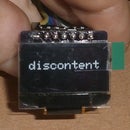Introduction: Cheapest, Bestest Computer Around, in Beginning of 2015
If you are on instructables, looking at this project, then you probably know that you can buy excellent and cheap computers with only a little bit of know how. Every 4 years or so I go through the process of re-learning just enough about computers to buy a big old desktop that would have been incredibly awesome and expensive 2 years ago.
This time, I decided to document the process and list my results. Be warned that this project will quickly (if not immediately) be out of date.
(Image of ubuntu running on lenovo, for proof)
Step 1: Shopping List
To get to the point quickly. Here is a shopping list of what I ended up with.
- The computer $300 (I think I got this for $250)-- What you get: fast processor. No operating system. No hard drive. Sturdy cardboard box.
Lenovo ThinkServer TS140 70A4000HUX i3-4130 3.4GHz Server Desktop Computer
- Hard drive: $50 -- big and cheap.
- WD Blue 1TB Desktop 3.5 Inch SATA 6Gb/s 7200rpm Internal Hard Drive http://amzn.to/1Rj7D1I
- Card reader: $7 -- totally optional, but if you have old digital cameras it is handy.
- Key board: $11 -- you probably already have one though...
- AmazonBasics Wired Keyboardhttp://amzn.to/1JSDrU9
- Mouse - $7 -- if you need one
Step 2: What's in the Box
Step 3: What's Inside the Computer
Step 4: Install Physical Stuff
The main this to install is the hard drive.
Step 5: Install Linux
I use Ubuntu Linux. It can be installed from a USB/Flash drive.
The first thing to do is to load the software onto the USB drive. This is most easily done from another computer that already has Ubuntu (this is the only way I've gotten it to work), there are also instructions using MacOS or Windows.
Instructions to make the USB drive are here: https://help.ubuntu.com/community/Installation/Fro...
I apologize for not making detailed instructions based on exactly what I did, but I didn't keep notes and I just don't remember. The instructions often change anyway, so the best thing to do is to work from the link.
Once you have the USB drive, you have to make it so the computer will boot from the USB drive. Here a few things might happen... well one of two things.
- You will put the USB drive in the computer, start the computer, and everything will work.
- It will not work
The first time I did this I rebooted over and over again until it somehow worked, so that is one method.
It is more likely that you need to edit the BIOS settings to make the computer boot from the USB drive. To enter the thing were you can edit the BIOS settings, press F1 over and over while the computer reboots. This should take you to a blue and white screen. Go to "boot order" and move "USB media" to the top of the list (using '+' key). Then try rebooting. This is more likely to work. You might also need to disable "Secure boot" or "Auto boot". (sh*t, this is another case where it didn't work right away, and I don't remember what finally did work, greatly reducing the usefulness of this instructable.... dang)
note: for more on BIOS setup:






